What is a Feedback Chatbot?
A feedback chatbot is an interactive conversational agent designed to gather feedback, opinions, and suggestions from users in a conversational manner.
It utilizes natural language processing (NLP) and artificial intelligence (AI) algorithms to understand user input and provide appropriate responses.
Feedback chatbots are specifically tailored to handle feedback-related conversations and differ from other types of chatbots in their focus on gathering and processing feedback.
How does a Feedback Chatbot differ from other types of chatbots?
While other chatbots may be designed for tasks such as customer support or information retrieval, feedback chatbots have a specific purpose of gathering feedback and opinions.
They are equipped with specialized features and capabilities that enable them to effectively handle feedback-related conversations and provide meaningful responses.
Key features and capabilities of a Feedback Chatbot
- Intelligent feedback analysis: Feedback chatbots can analyze and interpret user feedback, extracting valuable insights and sentiments.
- Contextual understanding: They have the ability to comprehend user input in context, allowing for more accurate responses.
- Customization options: Feedback chatbots can be personalized to align with specific brands, products, or services.
- Integration capabilities: They can seamlessly integrate with existing systems and databases for efficient data collection and analysis.
Why Use a Feedback Chatbot?
Feedback chatbots improve customer experience by enabling interactive feedback collection, increasing efficiency, and scaling responses to meet customer needs.
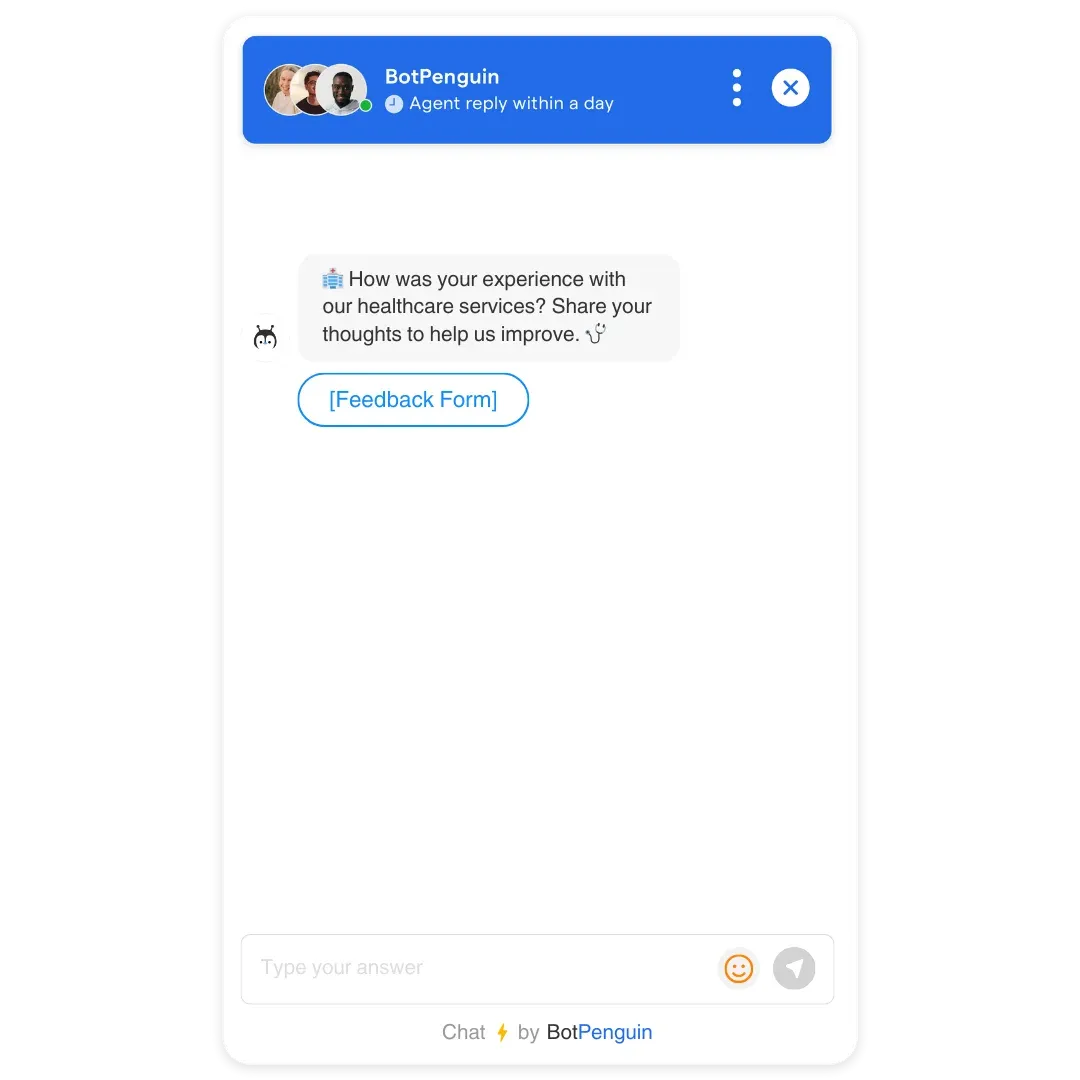
- Improved customer satisfaction: By providing users with an easy and interactive way to share feedback, a feedback chatbot helps businesses identify areas for improvement and address customer concerns promptly, leading to increased satisfaction.
- Time and cost efficiency: Automating the feedback collection process with a chatbot saves time and resources compared to manual methods, allowing businesses to focus on analyzing feedback and implementing necessary changes.
- Enhanced scalability: A feedback chatbot can handle a large volume of feedback simultaneously, ensuring that every user's input is captured and processed effectively.
Where can Feedback Chatbots be Implemented?
Feedback chatbots can be deployed across various platforms, from customer service to social media, enhancing user experience in multiple contexts.
- Customer support and service: Feedback chatbots can be deployed as a part of customer support systems to gather feedback on service experiences and address customer concerns.
- E-commerce platforms: Feedback chatbots integrated into e-commerce platforms allow users to provide feedback on products, delivery experiences, and overall shopping experiences.
- Social media channels: By incorporating feedback chatbots on social media platforms, businesses can collect feedback, opinions, and suggestions directly from users.
- Mobile applications: Feedback chatbots within mobile applications enable users to provide feedback on app features, usability, and overall user experience.
- Internal feedback systems: Feedback chatbots can be utilized within organizations to collect feedback from employees, improving internal processes and fostering a positive work environment.
How does a Feedback Chatbot Work?
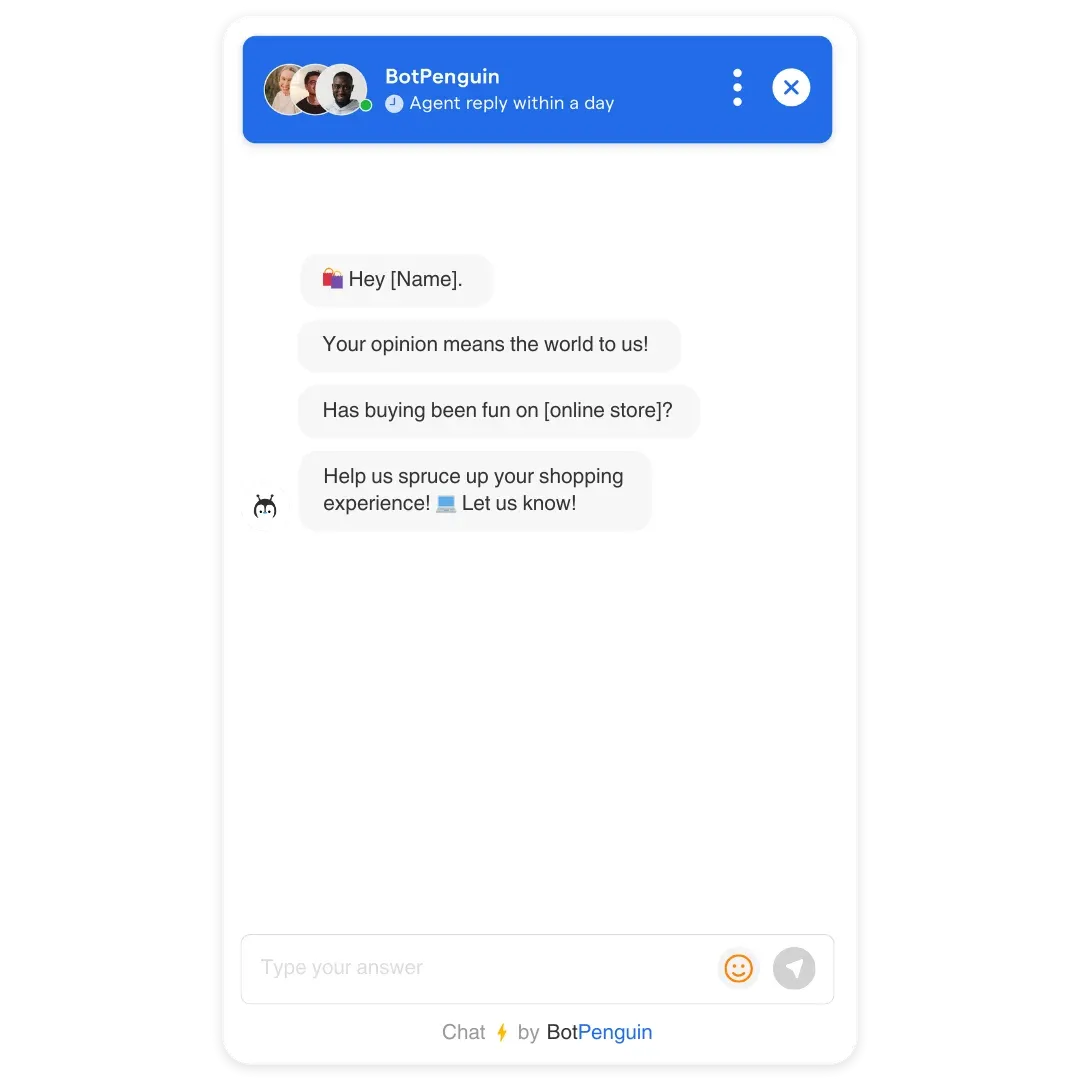
Feedback chatbots operate through NLP, AI algorithms, and system integrations to gather, understand, and analyze feedback for valuable insights.
- Natural Language Processing (NLP): Feedback chatbots utilize NLP techniques to understand user input, identify the intent behind feedback, and generate appropriate responses.
- Machine Learning and AI algorithms: These algorithms enable feedback chatbots to learn from user interactions and improve their understanding and response generation capabilities over time.
- Integration with existing systems: Feedback chatbots can integrate with Customer Relationship Management (CRM) systems, databases, or analytics tools to store and analyze feedback data effectively.
- User interaction and conversational flow: Feedback chatbots engage in interactive conversations with users, asking questions, seeking clarification, and providing feedback-specific responses.
Use Cases of a Feedback Chatbot
Feedback chatbots can serve various purposes, from customer support enhancement to gathering market insights, providing actionable feedback across industries.
- Enhancing Customer Support: Feedback chatbots can collect user experiences and concerns, helping businesses identify areas for improvement in customer support and streamline the resolution process.
- Gathering Product Feedback: Chatbots can gather valuable insights from customers about product features, usability, and performance, enabling companies to prioritize updates and enhancements based on user needs.
- Measuring Employee Satisfaction: Feedback chatbots can be deployed internally to collect employee feedback on workplace culture, management, and processes, fostering open communication and promoting a healthy work environment.
- Conducting Market Research: Chatbots can collect consumer opinions and preferences on various topics, providing businesses with valuable market research data to inform strategic decisions and product development.
- Event and Webinar Evaluation: Feedback chatbots can capture attendee feedback after events or webinars, helping organizers understand the effectiveness of their content, speakers, and overall experience, driving continuous improvement for future events.
Designing an Effective Feedback Chatbot
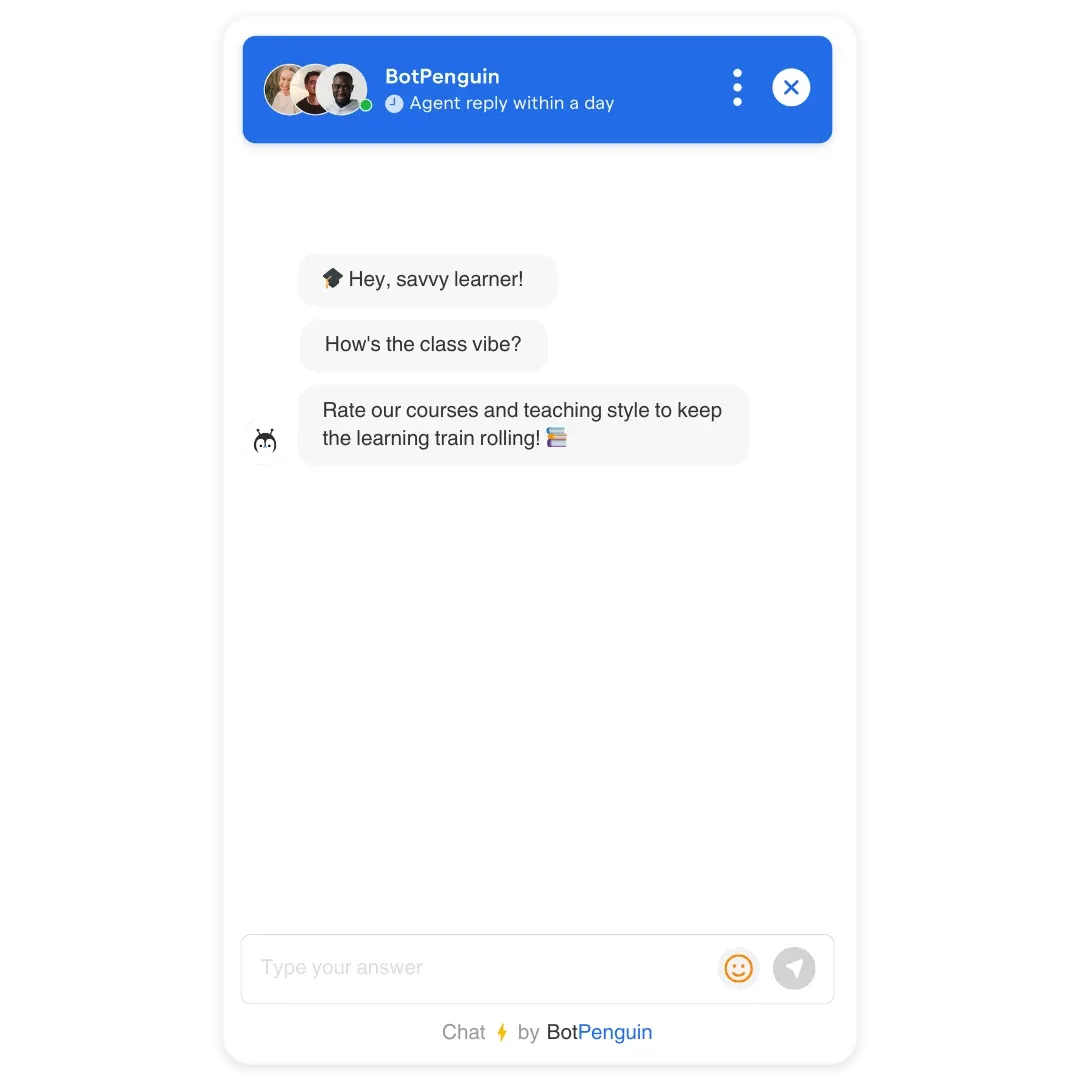
There are various things to keep in mind while designing an effective Feedback Chatbot
- Defining user goals and objectives : Clearly defining the purpose and goals of the feedback chatbot ensures that it aligns with user expectations and provides relevant feedback channels.
- Creating a user-friendly interface: Designing an intuitive and user-friendly interface enhances user experience and encourages more users to provide feedback.
- Crafting conversational scripts and responses: Well-crafted conversational scripts and responses ensure that the feedback chatbot engages users effectively and elicits valuable feedback.
- Personalization and customization options: Offering customization options, such as personalized greetings or tailored feedback categories, enhances user engagement and satisfaction.
Best Practices for Feedback Chatbot Management
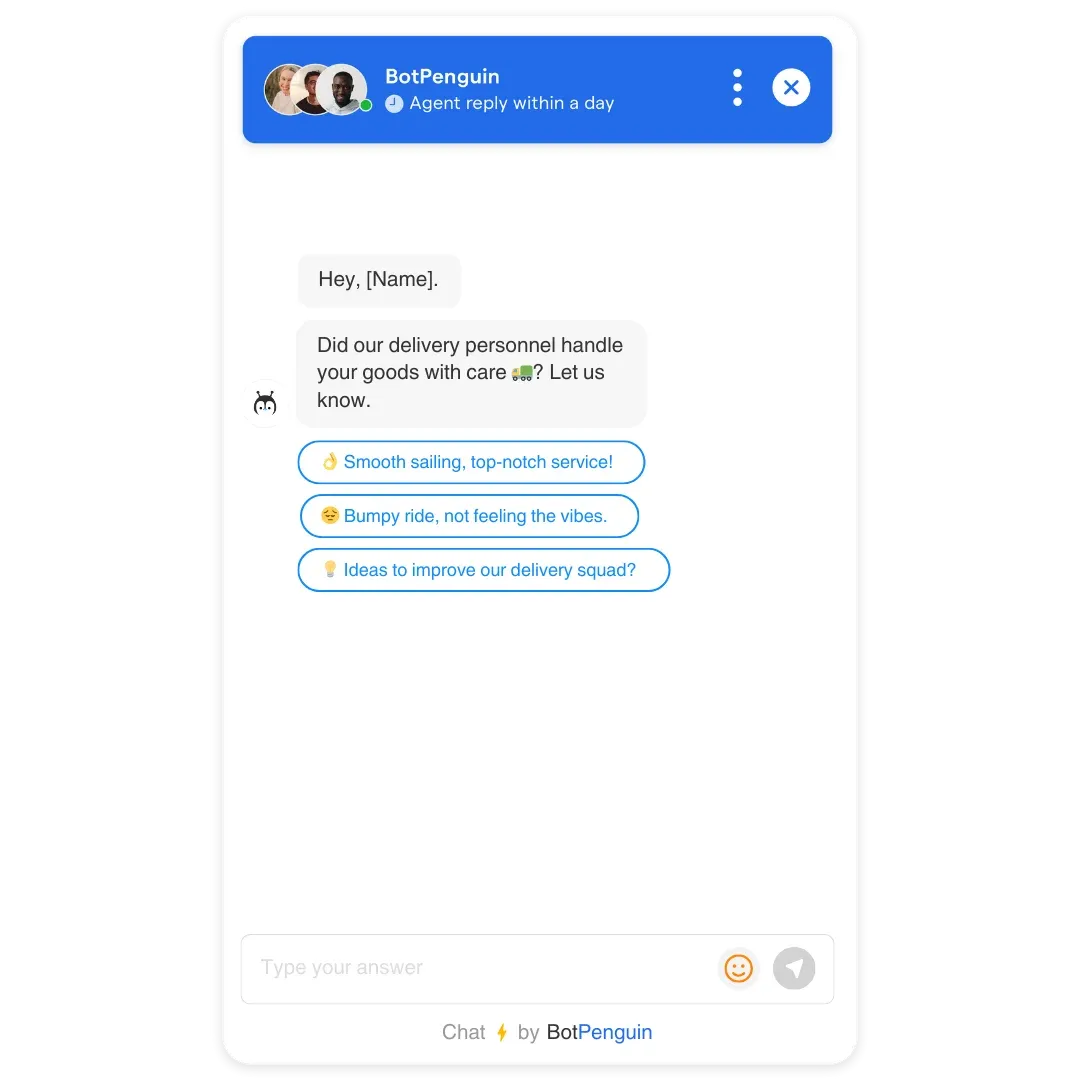
Maintaining a feedback chatbot involves regular updates, metric monitoring, user feedback integration, and trained operators for optimal management and improvement.
Regular updates and maintenance
To maintain optimal performance, feedback chatbots require regular updates and maintenance.
This involves keeping the chatbot's knowledge base up to date, incorporating new information, and refining responses based on user feedback.
Continuous improvement based on user feedback
User feedback is a valuable resource for enhancing chatbot performance.
Incorporating user suggestions and addressing common pain points helps improve the chatbot's responses, making it more effective in addressing user needs.
Suggested Reading:
7 Amazing Customer Feedback Chatbot Templates
Monitoring and analyzing chatbot metrics
Monitoring chatbot metrics provides insights into its performance and user interactions.
Metrics such as response time, user satisfaction, and conversation completion rates help identify areas for improvement and measure the chatbot's effectiveness.
Training chatbot operators for effective management
Chatbot operators play a crucial role in managing and monitoring chatbot interactions.
Providing comprehensive training to operators ensures they have the necessary skills to handle user queries, escalate issues when needed, and contribute to continuous improvement efforts.
Potential Challenges and Limitations
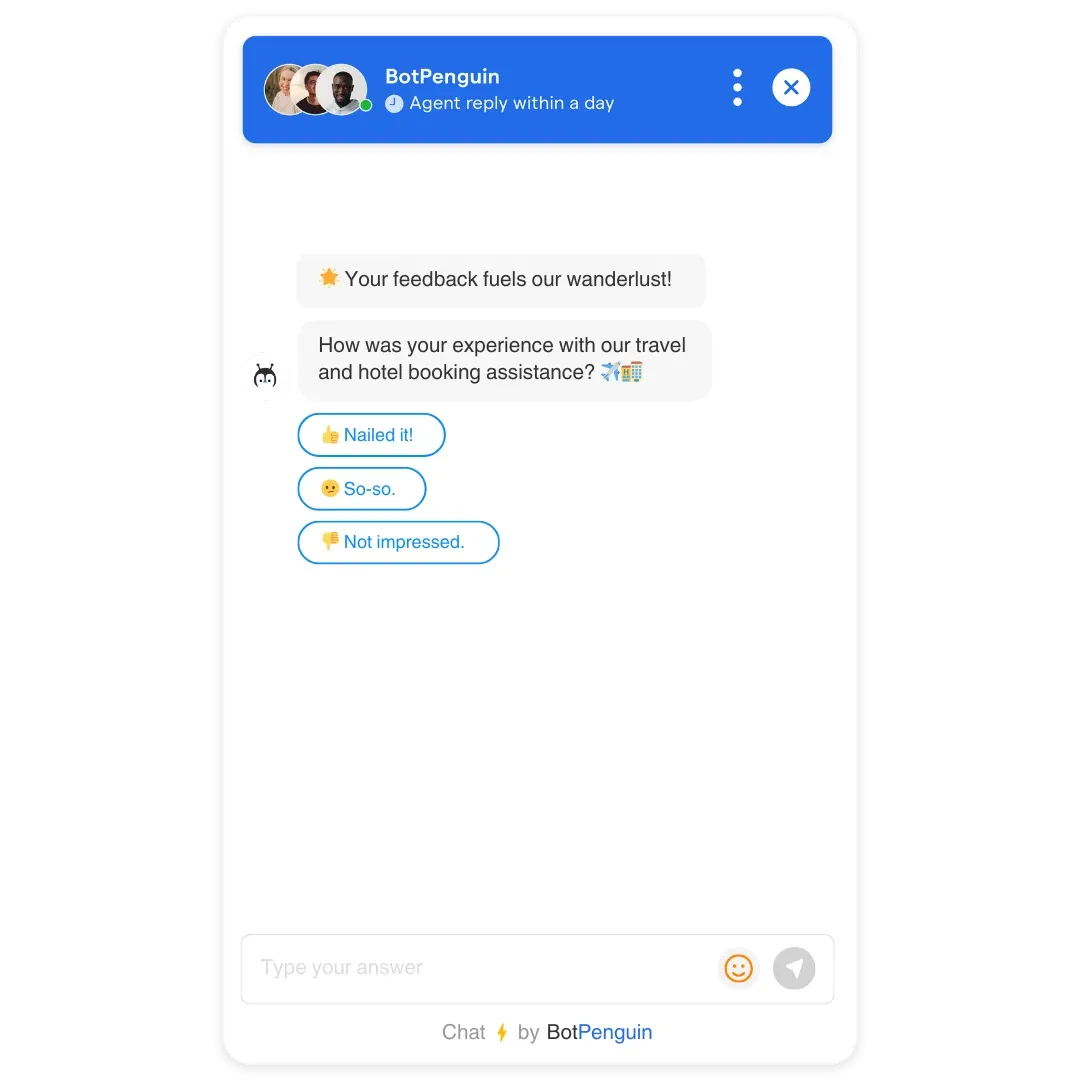
Feedback chatbots face challenges like language barriers, technical constraints, and balancing automation with human support for complex interactions.
- Language and cultural barriers: Language and cultural differences can pose challenges in chatbot interactions.
Chatbots must be designed to handle various languages and understand cultural nuances to provide accurate and contextually appropriate responses.
- Handling complex or sensitive issues: Chatbots may encounter complex or sensitive issues that require a delicate approach.
Balancing automation and human intervention becomes essential in such cases, ensuring a seamless transition to human support when necessary.
- Dealing with technical limitations: Chatbot are subject to technical limitations, such as understanding ambiguous queries or handling intricate requests.
Addressing these limitations requires continuous development and refinement of the chatbot's capabilities.
- Balancing automation and human intervention: Finding the right balance between automated responses and human intervention is crucial.
While automation provides efficiency, there are instances where human empathy and judgment are necessary for a satisfactory user experience.
Future Trends in Feedback Chatbots

Advances in voice integration, multilingual support, and sentiment analysis will drive future feedback chatbot innovations, enhancing user experience and personalization.
Integration with voice assistants
The integration of feedback chatbots with voice assistants allows users to provide feedback using voice commands, enabling more natural and convenient interactions.
This integration enhances the accessibility and user-friendliness of feedback processes.
Multilingual and multicultural support
Future feedback chatbots will increasingly support multiple languages and cultural contexts.
Advanced language processing capabilities and cultural understanding will enable chatbots to cater to a diverse user base effectively.
Advanced sentiment analysis and emotional understanding
The next generation of feedback chatbots will employ advanced sentiment analysis techniques to comprehend user emotions better.
Understanding user sentiments allows chatbots to provide empathetic responses, leading to enhanced user satisfaction.
Enhanced personalization and context awareness
Future chatbots will leverage personalized data and contextual information to offer tailored feedback experiences.
By considering user preferences, history, and context, chatbots can provide more relevant and personalized responses.
Frequently Asked Questions (FAQs)
What is a feedback chatbot?
A feedback chatbot is an AI-powered conversational agent designed to collect user feedback, suggestions, or opinions through interactive chat interfaces.
Why use a feedback chatbot?
Feedback chatbots provide a convenient, engaging, and user-friendly way to collect valuable feedback, helping businesses improve products, services, and customer experiences.
How do feedback chatbots work?
Feedback chatbots use natural language processing and machine learning algorithms to understand user inputs, ask relevant questions, and store collected feedback for analysis.
Can feedback chatbots be integrated into websites?
Yes, feedback chatbots can be easily integrated into websites, apps, or messaging platforms, providing seamless and accessible feedback collection channels for users.
Are feedback chatbots customizable?
Most feedback chatbots are customizable, allowing businesses to tailor the chatbot's appearance, conversation flow, and questions to align with their specific needs and branding.

